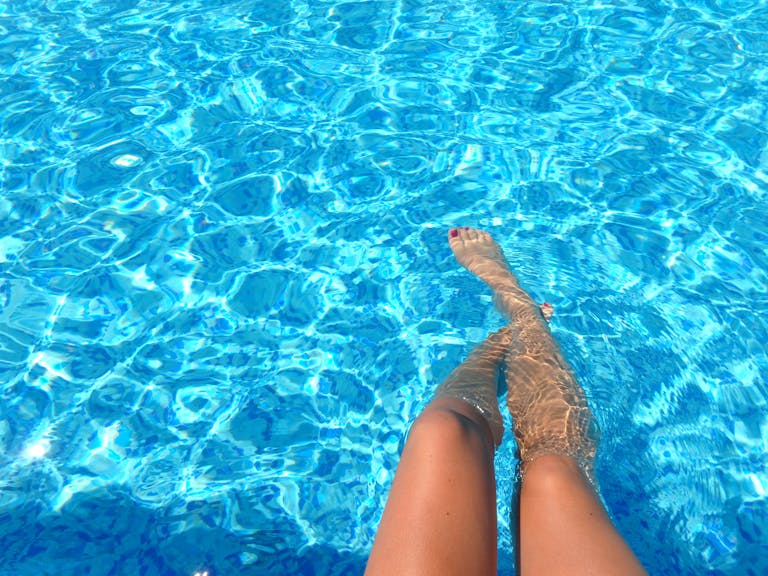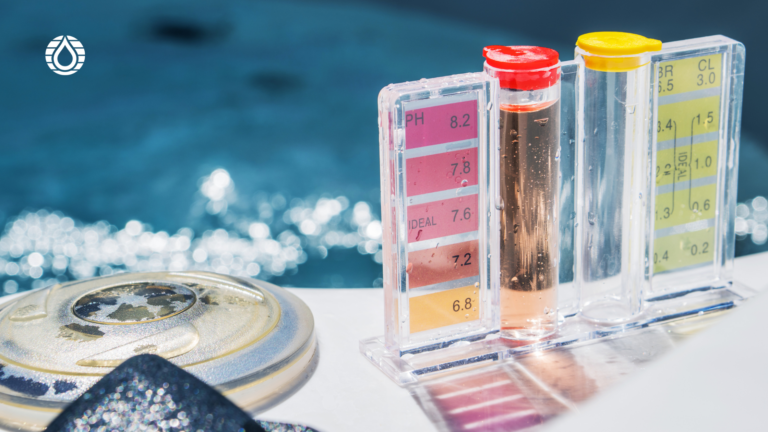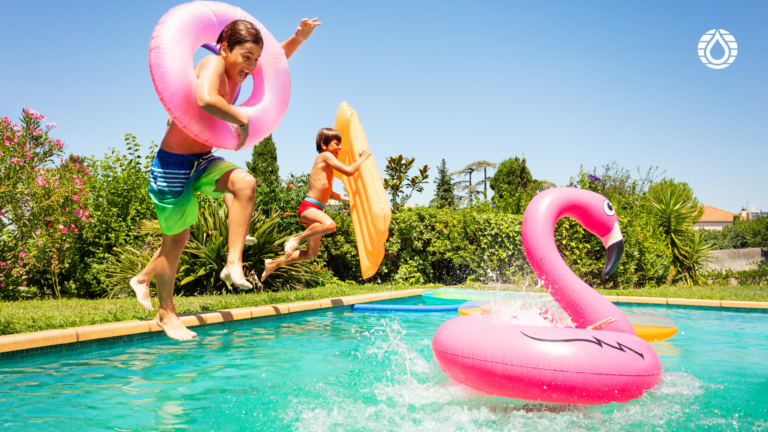Common Pool Issues & How to Address Them
As a pool owner, you will encounter some common pool issues at some point. These issues can be frustrating, but with the right knowledge and tools, you can address them and get your pool back in optimal condition. In this blog post, we’ll discuss the top five common pool issues and how to fix them. We’ll also provide some helpful tips on how to prevent these issues from occurring in the future. So, let’s dive in!
1. Pool Leaks
Pool leaks are a common problem that can lead to significant water loss and damage to your pool’s structure. To fix a pool leak, you’ll need first to identify the source of the leak. This can be done through a professional leak detection service or a bucket test. If you have a visible plumbing leak, you can replace the PVC yourself, but if there is a plumbing leak underground or behind the walls of your pool (found by the leak detection company), it is best to contact a professional.
Repairing underground plumbing leaks often requires busting out the concrete to expose the pipes, replacing the broken or cracked pieces, and patching up the hole. If there is a leak at their pool equipment, you would need to know which parts to install and how to install them, so it is usually best to contact a professional. Once you’ve identified the leak, you can patch it yourself or hire a professional to repair it. To prevent future leaks, regularly inspect your pool for signs of wear and tear and address any issues as soon as possible.
2. Pool Pump Issues
Pool pump issues can lead to poor water circulation and filtration, which can cause cloudy water and algae growth. Common pool pump problems include clogged impellers, air leaks, motor issues, leaking seals, low water flow, overheating, and electrical issues. To fix these issues, you must first diagnose the problem by checking the pump’s components and then make the necessary repairs or replacements. Low water flow can often be resolved by regularly cleaning the skimmer and pump baskets to ensure water flows smoothly through the pump. Pumps can overheat if the water level is too low, so it’s important to keep the pool water level in the middle of the tile line to prevent the pump from running dry.
If there is an electrical issue, check the breakers to ensure they aren’t tripped, but any other electrical repairs should be handled by a professional. Regularly clean your pool’s filters to prevent future pump issues and maintain proper water chemistry. You can also consult the Association of Pool & Spa Professionals for additional resources on pool pump maintenance.
3. Cracked or Damaged Pool Tiles
Cracked or damaged pool tiles can be both a safety hazard and an eyesore. You’ll need to replace the damaged tiles with new ones to fix this issue. This process can be time-consuming and may require the assistance of a professional pool repair service. To prevent future tile damage, regularly inspect your pool’s tiles for signs of wear and tear and address any issues as soon as possible.
4. Pool Heater Problems
Pool heater problems can leave you with a cold pool and a less enjoyable swimming experience. Common pool heater issues include faulty sensors, corroded parts, and gas or electrical problems. To fix these issues, you must first diagnose the problem by checking the heater’s components and then make the necessary repairs or replacements. If the water isn’t getting hot, it might be because water cannot flow properly to the heater. Ensure the filter is clean, skimmer and pump baskets are empty, the breakers are not tripped, and the heater is plugged in correctly.
For any other issues, it’s best to contact a professional. Heaters are expensive and complex, and attempting to diagnose or repair them without expertise could cause significant damage and potentially void the warranty. To prevent future heater problems, regularly inspect your pool’s heater for signs of wear and tear and address any issues as soon as possible. While the U.S. Department of Energy provides resources on heater costs and sizing for your home, they do not assist with troubleshooting or repairs.
5. Algae Growth
Algae growth can make your pool look unappealing and clog your pool’s filters and circulation system. To fix this issue, you’ll need to shock your pool with a high dose of chlorine and scrub the pool’s surfaces to remove the algae. To prevent future algae growth, maintain proper water chemistry and regularly clean your pool’s filters and circulation system. Depending on the size of your pool and how often you use it, running your pump 8–12 hours during the day in the summer months and 6–8 hours during the day in the winter months can also help prevent algae.
Clean your filters every three months to ensure proper water flow. Sand filters and DE filters can be backwashed to clean dirt and debris, while cartridge filters need to be opened, and the cartridges cleaned. Monitoring your filter pressure gauge is another effective way to determine when your filters need cleaning, as dirty filters are the leading cause of algae. Regularly clean leaves and debris from your skimmer and pump baskets, and make sure your pool jets are angled downward and all facing the same direction to promote optimal circulation.
While these common pool issues can be frustrating, you can address them with the right knowledge and tools and get your pool back in optimal condition. If you need professional assistance for any of these issues, Round Rock Pool Pros is here to help. Our team of experienced technicians specializes in Common Pool Repair Issues and how to address them, ensuring that your pool stays in top shape. Contact us today to schedule a service or learn more about our offerings.







